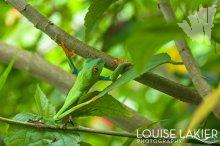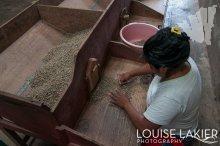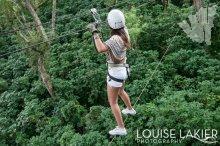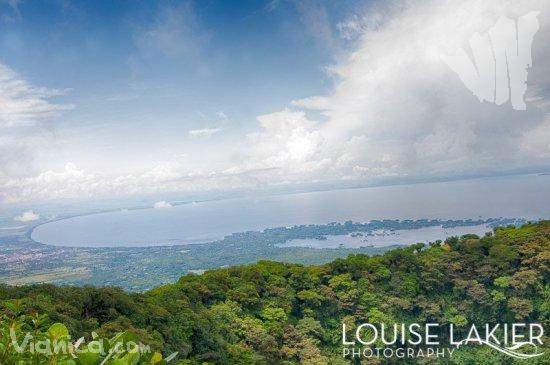Chronicle: The Mombacho Adventure Tour
Louise Lakier | Sep 18, 2013

Trip around coffee Hacienda El Progreso, canopy zipline and volcano trails El Crater and El Puma in Mombacho.
This is the Mombacho Volcano Adventure Tour by Café Las Flores, experienced by South African photographer Louise Lakier:
The day started with coffee, as it tends to do. But first a behind the beans tour of a coffee plantation on the slopes of Volcano Mombacho. Hacienda El Progreso sits halfway up the Volcano creating a gateway to the peak and a welcome resting and refreshment point. Ramon was my guide introducing me to the sustainable farming practices of Cafe Las Flores.

It takes 8 days for a seed to sprout. The smaller beans become seeds for new plants. The baby plants stay in bags for one year where they are closely attended and nurtured into healthy plants. The nursery holds up to 300 starters. Cane trees shade the plants from sun and wind and are cut down to allow more rays when needed. There are 20-25 species of birds and monkeys sharing the slopes and the trees of the farm. Fortunately, they do not like the taste of coffee. The trees are pruned to low shapes for ease of picking. Each tree produces beans every 5 years and lives up to 20. The green beans picked by mistake go to the drying process as low quality beans and are used for Presto.

Once approved for shipment, the beans are trucked to Managua for roasting. 25 minutes of roasting yields espresso, with less caffeine due to cooking longer. 16 minutes of roasting yields a medium roast with 100% caffeine. I could taste the difference, the medium roast was surprisingly much stronger.

After a hearty lunch of chicken, rice, beans, salad and plantains, it was time to see the views. We caught a ride to the Biological center and on the way our guide spied a two toed sloth in the crook of a tree. Another new Nicaraguan creature sighting for me. We hiked the El Crater trail and a portion of the El Puma trail. Though I was eager to go the whole way, the hour was getting late and the shadows lengthening. The views from El Crater reached to Masaya, the Apoyo Lagoon, and Managua. Lake Nicaragua and the Isletas stretching out below. At the highest accessible point on El Puma, I could see the peak of Mombacho, and Ometepe Island in the distance once the white puffy clouds passed by. On the trails, I learned about the parasitic plants and plants for teas to cure sleepless nights. I enjoyed the cool breathe of the cloud forest and marveled at its rich diveversity.
Louise's photo gallery: Mombacho adventure.

Translated by Cynthia Cordero
